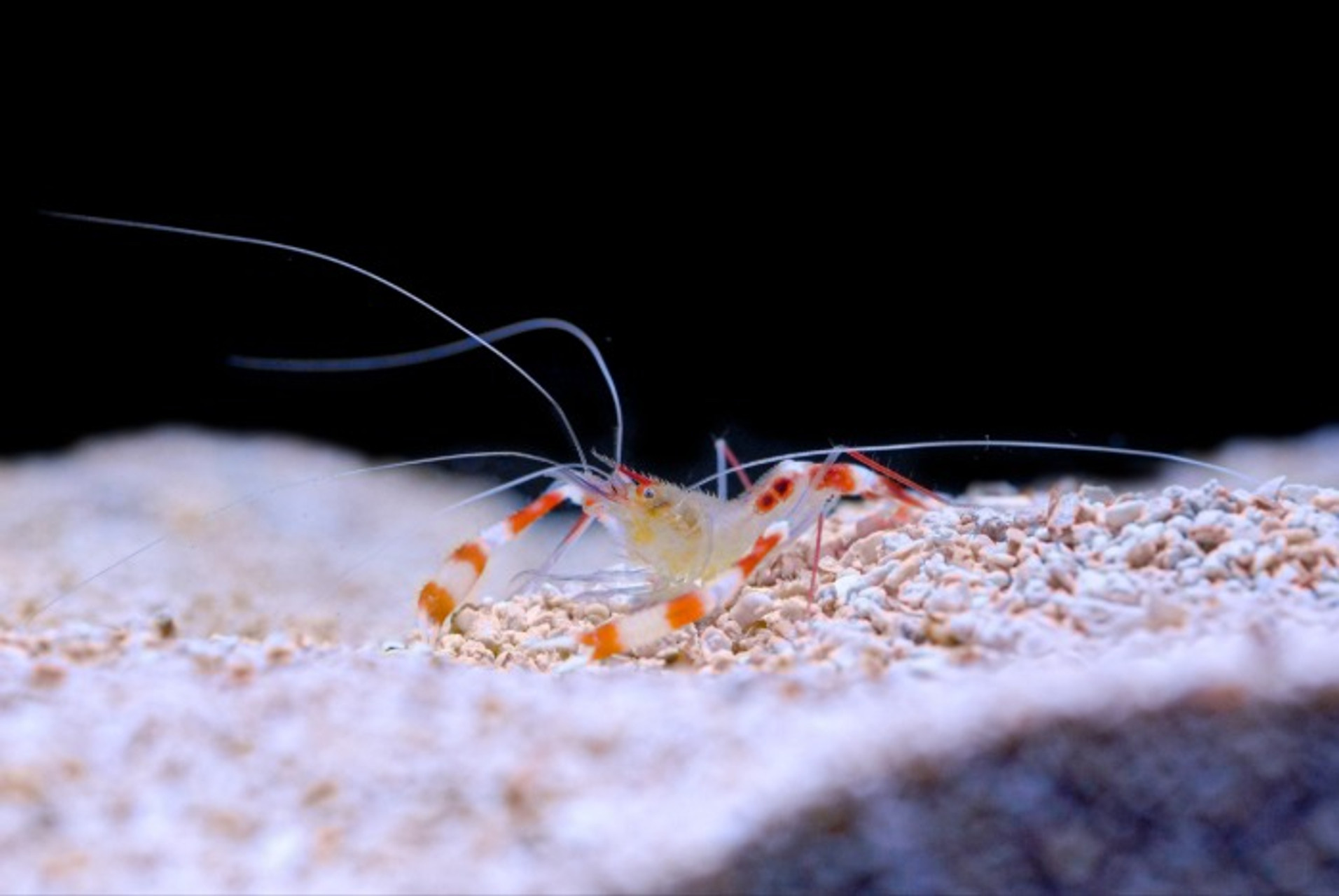The Coral Banded Shrimp

Coral Banded Shrimp, Barber Pole Shrimp and Boxing Shrimp as they are commonly called are a staple in the marine aquarium trade for good reasons. They are resilient and add a dash of personality to the cryptic regions of your reef or mixed invertebrate aquarium. Despite the common names of Stenopus hispidus, they actually aren't shrimp but a decapod crustacean that closely resembles a shrimp. They are found in habitats in the western Atlantic Oceans, commonly coming to us from the Caribbean, typically below the intertidal zones, where they can be seen as deep as 690 feet (~210m). The Coral Banded Shrimps habitat doesn't stop there, however, with populations in Australia, New Zealand, and the Gulf of Mexico. Coral Banded Shrimp have also been recorded in temperate waters as far north as Canada. This species has complex marine behaviors and thus are found in pairs or singularly only. While not thought of as a cleaner species in the aquarium, as they rarely exhibit this in captivity, Coral Banded Shrimp will also provide cleaning services to fish. They do this by picking off dead cells, leftover food and parasites from any fish willing to oblige near their overhang of choice. While their antenna and chela (pincers) may give the illusion of an imposing crustacean, in reality, they are rather small with the length of their bodies topping out around 2.5" (~6.4cm). However, some have reported seeing larger females in paired couples. In the wild, Coral Banded Shrimp are mostly nocturnal, and not coincidentally, this is also the time divers go out for collecting them.
Coral Banded Shrimp are extremely suitable to captivity, though there are some compatibility issues to consider. Though they are a cleaner species in the wild, they don't typically replicate this behavior in captivity as mentioned before. This means they may be on the menu for fish and other predators that would may otherwise leave them be. In particular, I wouldn't trust most triggers, eels and puffers around crustaceans. On the other side, the coral banded shrimp if not fed sufficiently or if placed in too close of a confinement, will either fight with or consume other crustaceans and invertebrates. They will fight with other Coral Banded shrimp unless collected as a mated pair, they will also quarrel with other shrimp if not enough space is provided. Small snails and small hermits may also be considered prey items by the Coral Banded Shrimp. Another prey item for the Coral Banded shrimp is small bristle worms, too many of which can be the bane of a reef tank, so some aquarists employ them for this reason.
In the wild outside of their diet from cleaning the Coral Banded Shrimp is primarily a scavenger or organic detritus. Any meaty foods of a marine origin will do as far as feeding them, including but not limited to mysis shrimp, krill or squid. Most aquarists find that Coral Banded Shrimp housed with fish will simply join in on feed time, eating food and fecal matter left behind from the fish.
Coral Banded Shrimps lifespans have not been observed to be affected by captivity with both wild and captive specimens living in the 2-3 year range.
Keep in mind that any specimens or pairs you acquire may be initially very shy, not venturing out into the open for a couple of weeks, during this intermittent time, you can observe and offer small feedings.
Crustaceans in general are very sensitive to quick changes in water chemistry, specifically drastic changes in the pH and salinity during acclimation can be a fatal error on the aquarists part.
Coral Banded shrimp are a great candidate for someone foraying into keeping marine invertebrates for the first time as they are easily attainable, personable, attractive, and adaptable.